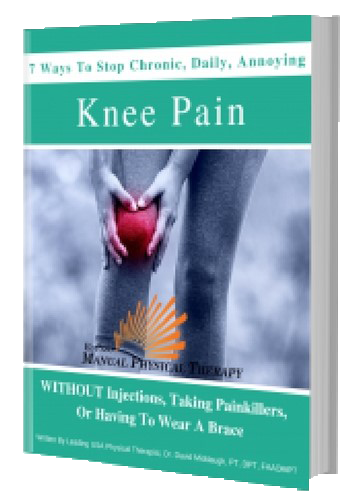TAP TO CALL (915) 503-1314

WHEN ITS RIGHT TO HAVE A REVISION SURGERY FOR A FAILED KNEE REPLACEMENT
In this video I’ll be sharing with you when it’s right to get a revision surgery done for a failed knee replacement. A revision surgery is when you’ve already had a knee replacement and the ends of the bones where the prosthetics where the metal parts are that are installed to replace the joints, they have to be re installed and you have to have another surgery to redo the replacement surgery.
Here are five reasons that you might need a revision surgery. The first one is an infection, right after surgery, of course, you have a big incision, a big cut from the surgeon, where they had to do go in to do their work that has to heal up and you’ve just got a bunch of new parts installed in your knee, there’s a chance that you can get an infection.
And that’s when a bacteria that shouldn’t be inside your body ends up inside your body, whether through the surgical procedure or maybe during the healing process afterwards. And if that bacteria begins to grow and multiply, it can begin to damage the tissues around you and cause you all sorts of problems, you’ll have pain, of course, swelling more so than normal, stiffness in the joints, inability to use the leg like to fully bend or straighten.
And usually there’s losses of all these motions like bending, straightening and abilities. Usually you’re improving after surgery, you’re getting less pain, less swelling. But when the infection starts to come on, you start to get more pain, more swelling, less motion in the knee, so you have a decline in your improvement.
If that infection is not handled properly, then it’s possible that the doctor may decide that the best course of action is for you to have a revision done, during which they’ll take the parts out, they’ll put a spacer in, you’ll be on antibiotics, that spacer will be impregnated with antibiotics.
So the idea is to make sure to get rid of the infection and then you’re going to go in and have another revision done or another knee replacement done. And they call it a revision at that point, in order to close you up again and go through the whole process again, hoping that you don’t get another infection.
That’s the most common cause for revision. The next four that I’m going to give you are less common, but also reasons that you might have a revision. And I do want to note that the ones that are coming are a little bit more under your control.
If you had an infection, usually it’s has to do with the surgeon’s office, the situation, I wouldn’t necessarily blame the surgeon. But it could just be the situation that you were in, it was kind of a luck of the draw.
The second reason you might need a revision surgery is for a fracture, that’s when the bone around the area that is replaced, gets cracked or broken somehow it could be from an accident, maybe you took a spill a fall. Maybe you were in a vehicle accident, a motor vehicle accident, or maybe it was from a repetitive trauma, repetitive stress like overdoing it somehow in a way that your body wasn’t prepared, and that caused the bone to break.
If that break is close enough to where the replacement parts are, and it doesn’t look like you’re going to have a chance to heal it properly because of the replacement parts, then the surgeon may choose to do a revision surgery.
Now there’s a chance though that you can heal the fracture, you can recover and never have to have a revision surgery done. But you have to of course take the right steps, you have to make sure to rest, you have to follow up with your doctor and see what’s best for you to make sure that that fracture heals for the long term.
The third reason that you might have a revision surgery is if you have loosening of the hardware of the implants that are installed on the ends of the bones. If those implants begin to loosen their attachment to the bones, it’s possible that you have a lot, you begin to generate some instability inside the knee joint.
And that makes for a non functional knee you can get a lot of buckling weakness in the knee where you don’t trust the leg. Now usually the surgeon will guide you to do physical therapy to do certain exercises, strengthening exercises, usually in order to bring stability, stability to the joint and get that implant to seat to move into where it’s supposed to be.
And hopefully the bone will grow into it properly if you have a certain type of implant so that it’s stable and you’re not loosening the hardware that’s in there. If you aren’t successful with that, then an option for you might be to have a revision surgery. Number four is implants wearing.
So the metal parts on the end of the bone between the two metal parts on the ends of the thigh bone and the end of the shin bone here. There’s a plastic part and usually that plastic part that sits between the two metal parts that acts like the meniscus. It can become worn down even the metal parts can become worn down.
If you have enough wearing, if it becomes a problem and impedes the function of the joints, then your surgeon might recommend that you have those parts replaced, in which case you’d be getting a revision surgery. Now, those parts don’t just get worn out for no reason, there’s usually too much pressure in the joint.
And that’s typically coming from something we call muscle imbalances here on this channel, surgeons aren’t aware of this, most physical therapists aren’t aware of this. But if you have an imbalance of the forces of muscles around your leg, it can cause there to be too much pressure in the joint, which wears the surfaces inappropriately, that’s usually what leads up to knee arthritis.
And up to the point where you where it gets so bad that you need a knee replacement. If you haven’t solved that root muscle imbalance, it tends to follow people even after they have their knee replacements, and it can cause wearing of the knee replacement parts much faster than they normally should.
So there’s some control aspect for you in this and that if you can fix the muscle imbalance, then you can potentially preserve your knee replacement parts for as long as possible, ideally, the rest of your life so that you never have to have another surgery. And number five is an uncontrollable instability.
Now you can get instability in the knee, because the ligaments around the knee that are not replaced, they’re still holding your knee together. And if those ligaments get stretched out, then your knee gets wobbly and it starts to buckle, it just becomes an untrustworthy, you can’t go to step on it, you can’t go up and up and down stairs very easily without feeling like you’re going to lose your balance or your knees going to give out on you.
In that situation, the reflexive action, which is a good thing that the surgeons will do, and most physical therapists will tell you, you need to get into a brace, get a knee brace on one that has brackets metal brackets and hinges on the sides so that it keeps your knees stable, it pushes your knee this way and prevents it from moving side to side so that the ligaments can have a chance to heal.
The problem though is that that’s only going to give you relief short term, which is good, you need that. But in the long term, we need to figure out what caused those ligaments to become loose. And usually it goes back to that muscle imbalance that I mentioned previously.
If your muscles are out of balance, it tends to cause your knee to move in an awkward way, which can tension the ligaments and overtime, that little bit of awkward movement can really begin to stretch out certain ligaments and that causes you to have that instability situation. So fixing the root muscle imbalance is key in making sure you fix that instability.
Now even the implants loosening and even a fracture I would say can be influenced by this idea of a muscle imbalance. Of course the infection isn’t going to be influenced by the muscle imbalance, like I said that’s related to the surgical situation. Those tend to happen within the few weeks after surgery.
But fractures, the implants wearing down the implants loosening from their position and then the joint becoming unstable from the ligaments getting loose. All of those can be influenced by you addressing the muscle imbalance. Now chances are you’ve never addressed the muscle imbalance because you had knee arthritis which led you to get a knee replacement done.
And you probably had that muscle imbalance when you had knee arthritis because it’s the root cause of knee arthritis. And so you still carrying that muscle imbalance with you. So it’s important for you to address the muscle imbalance you can get the normal forces going through your knee joints and you can prevent any bad stuff from happening to your replaced knee like a revision surgery.
Now I’ve got a program called the Failed Knee Replacement Recovery Program. And its main focus is to calm down pain in the knee in somebody who’s had a knee replacement to get them into a position where they can then work on the muscle imbalance to keep the forces normal in their knee joint for the long term so they can feel fantastic and trust their knee all the way.
There’s a link to that program down in the description below. I’ve also got a playlist of all our videos that help people that are suffering from pain who’ve had a knee replacement that’s also linked in the description down below.
If this video was helpful for you, please give us a thumbs up share this with somebody you think needs to see this, subscribe to our channel. And please hit that notification bell so that you don’t miss out on any of the helpful video we post each and every week. Thanks so much. I’ll see you in the next video. Bye
Would You Like To Talk With A Specialist?
Appointments and Questions Call: (915)503-1314
EL PASO MANUAL PHYSICAL THERAPY
2601 E. Yandell Drive, Suite 232
El Paso, Texas 79903
© 2023 El Paso Manual Physical Therapy, PLLC, All Rights Reserved
